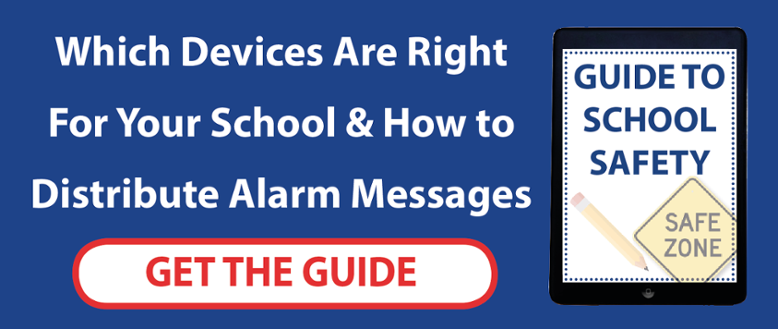
School safety is a very complex issue. It is often difficult to know where the responsibility lies in terms of safety and security solutions in UK schools. Many teachers in the UK at some point in their careers have been threatened with, or experienced physical violence. Research suggests that there are approximately 30,000 or more cases of violence in schools each year and rising. There are also other safety issues such as the reporting of accidents, either in the classroom or when out on excursions. This article will discuss issues that are faced by school staff, who is responsible for reducing safety incidents, and the solutions to tackling these problems.
What Makes Teachers So Vulnerable?
As lone workers, teachers often spend most of their work day without support from any other staff members. This means during lesson hours, they are exposed alone to violence from pupils. It can often be difficult for a teacher to alert any other staff members of a violent incident in the classroom. Furthermore, as the number of students outnumber the teacher significantly it can be a real challenge to manage these incidents when they occur.
Violence Isn't The only School Safety Issue
There are a huge number of opportunities for accidents to occur, either on school grounds or out on school trips. School trips are essential in the learning process for pupils but can often mean exposure to potentially dangerous situations. For example, a geography trip to moorland can easily lead to a student tripping on rabbit holes, or getting caught on barbed wire, or worse. Responding quickly and effectively to these situations while also supervising other pupils can be an arduous task.
Terror Is A Modern Day School Safety Concern
With attacks from terrorist groups spreading throughout Europe, the UK terror threat is high. Knowing what to do in a terror situation to minimise casualties and alerting the authorities is a huge responsibility for school staff. Without effective communication strategies, a terror attack on a school can be a monumental disaster.
The Importance Of Safety Audits
Knowing how to conduct a safety audit and regularly doing so can help to identify key safety issues and areas of concern. The first thing to look into should be any equipment or departments of the school which may be outdated or malfunctioning. Once any issues have been identified, the risk of each issue should be determined. Usually external safety auditors will rectify any problems before any safety incidents can occur. Regular audits will lead to the identification of key problems in different areas of the school. Each department will face different challenges in regards to health and safety. For example, areas of the school where pupils are required to use specialist equipment such as computers or laboratory chemicals, present greater threats and need to be tackled accordingly.
Preparation Is Key
Although safety audits hold great importance in schools, preparing for the unexpected is one of the best safety solutions. For example, in the event of a violent assault on a teacher, an accident involving pupils, or even a terror attack, it is difficult to know how to prepare. One of the best solutions to all of these issues is investment in communication systems that allow school staff to alert each other of any potential accidents, incidents, or threats that occur. Alarm systems are often used in schools, however, a remote alarm solution is often more reliable and allows teachers to trigger it in any situation as soon as it happens.
Traditional alarms often require teachers to source a triggering system which can be attached to a wall at a significant distance from the classroom. A remote system allows teachers to trigger an alarm wherever they are, this is particularly useful in a classroom. A Smart alarm system allows teachers to trigger alarms to alert other staff members or request assistance using a mobile app in any situation.
A smart alarm system not only works well in alerting other school staff in dangerous situations or the event of an accident, they also work as a deterrent. Making pupils and staff aware that the system is easily accessible for teachers and in use at the school helps to remove the aspect of vulnerability teachers face. Teachers are often attacked due to their vulnerable nature in which they do not have a means of alerting staff outside of the classroom, this type of system helps to eradicate this.
Who Is Responsible For The Introduction Of Safety Systems And Safety Practices?
Standard school teachers are generally fairly powerless when it comes to the introduction of safety procedures and systems. Although they are responsible for following existing safety policies and procedures, implementing new ones is a different story. This means they rely on Head Teachers, School Managers, and in some cases dedicated Health And Safety Managers to put these solutions in place. The introduction of these type of systems can have a number of benefits, a safer school where staff and pupils can feel more comfortable, and it can also save the school money.
A mobile safety system is an investment, protecting both staff, students, and school property. For example, if a pupil or group of pupils decide to vandalise expensive equipment or buildings in the school, the financial cost of this can be significant. Having this kind of system in place allows teachers to alert others and request back up to diffuse these situations. Furthermore, the system can be beneficial in preventing potential lawsuits from developing. Dealing with a situation as soon as it occurs reduces the chance of any repercussions.





